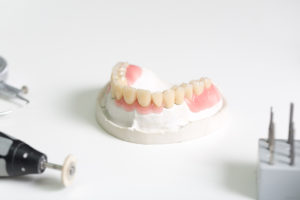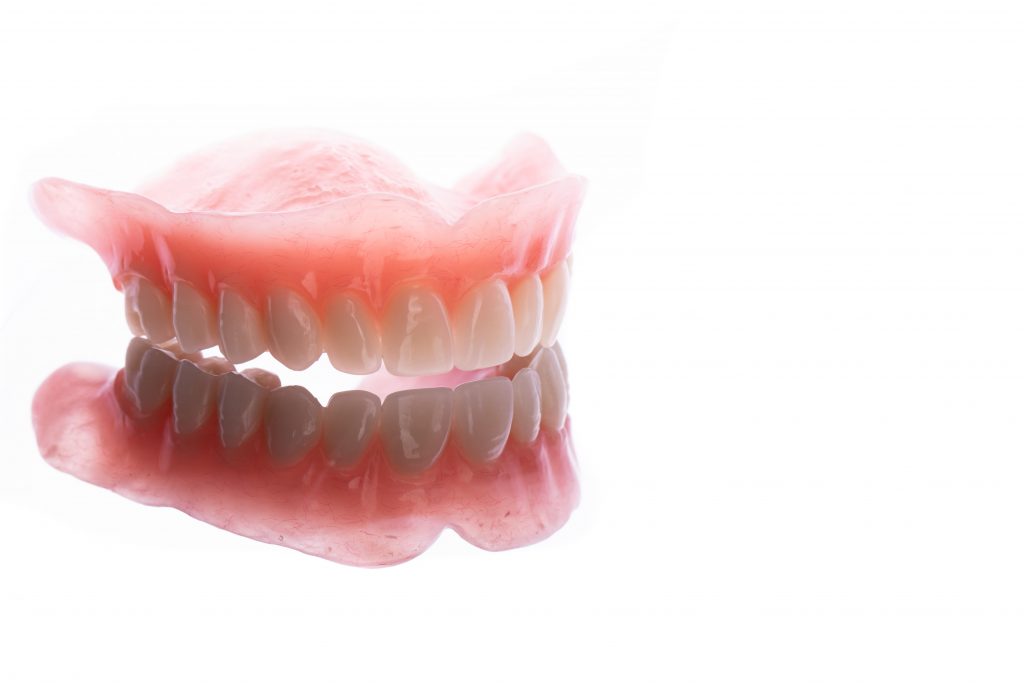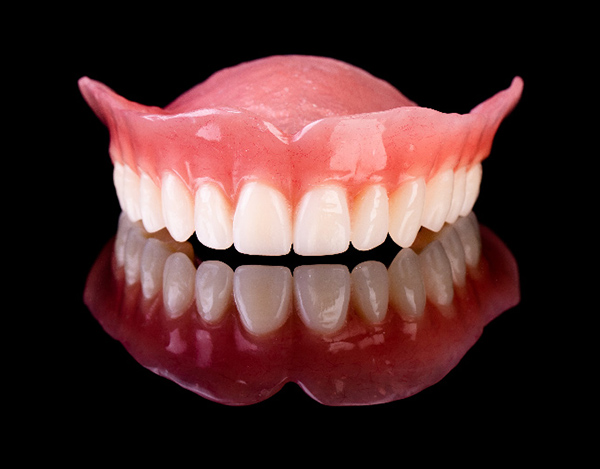There are cases when the situation in the oral cavity is such that fixed prosthetics are not feasible for certain reasons. In such situations, mobile solutions or dentures are advised.
Due to some missing teeth, a full or partial skeletal denture is made.
Full dentures are made out of acrilate, while partial dentures can be made out of two different materials: acrilate and wironite (metal based).
When choosing the appropriate prosthetic replacement, it is very important to talk to your dental medicine doctor and together with him decide what is best solution for you while taking into consideration personal, medical and financial factors.
Making a good full or partial denture requires a lot of experience and knowledge in creating the best chewing and speaking function possible, while also providing good facial aesthetics by supporting soft tissue.
Do you know that today, every classical denture can be replaced by a denture supported by implants and special retention elements (eg bar, locators, etc.).
The result is a better stability and functional unity with the rest of the oral cavity.
Full or complete dentures
Full dentures are made for each jaw in cases of complete toothlessness. Unlike partial dentures they are constructed in a more simple way, they consist of a denture base on which teeth are mounted. The base is made of pink acrylate which blends with the surrounding gum tissue improving the complete aesthetic impression.
Total dentures lie directly on the gingiva which covers the bone structure of the jaw.
The base of the denture is made as big as possible but according to the rules of profession. The forces generated while chewing with the artificial teeth in the denture must be transferred from the base to the mucous membrane and bone tissue. Considering that the mucous membrane cannot withstand great loads, it is necessary to distribute the pressure forces evenly to a bigger surface.
The upper base covers the whole palate, while the lower base has a horseshoe shape which leaves free space for the tongue.
Implant reteined cover denture
In many cases of complete toothlessness patients cannot use a traditional denture. A cover denture is then recommended since it needs a lesser number of implants. Considering that the procedure itself is less invasive the financial impact of the therapy is also lower. This kind of denture can be an ideal and comfortable prosthetic solution for patients.
Wironit dentures (metal based)
A traditional wiron denture is a mobile metal based acrylate denture. It is used as a permanent solution for partial loss of teeth if other options are not possible.
The denture body is made of noble material (wironit) and fasteners (anchors) or crowns (telescopes) that anchors the denture on to the carrier teeth connected into bridges.
Clips were used eariler, but nowadays the anchoring system used for a combination work (anchors and telescopes) provides excellent functional and aesthetic results, such as stability and discretion when wearing the prosthesis.
Unlike full dentures, where the chewing forces are transferred to the mucous membrane, the partial denture will transfer the load to other teeth and thus relieve the mucous membrane. The advantage of partial prosthesis is that it can withstand larger chewing forces without mucous membrane irritation.
Before the partial denture is being installed, the remaining teeth must be rehabilitated and prepared before the making of the prosthesis.
Combined prosthetics

In such cases, it is possible to modify the wiron denture in such a way that the clips which are used as retention elements are replaced by attachment joints. The remaining teeth in the jaws are prepared and covered by a metal ceramic bridge which has attachment joints on its ends which are used to fasten the removable part of the prosthesis. Due to the firmness and immobilization of the denture, patients have a satisfying chewing function, while the transition between the bridge and the prosthesis is completely invisible during everyday activities such as speech or laughter.
The future of dentistry strives for permanent prosthetics to provide patients with the best long-lasting treatment.


